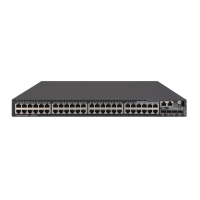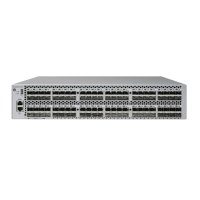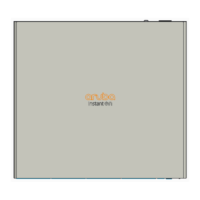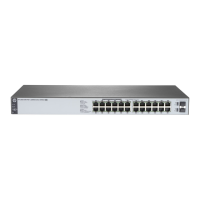234
• Routing policy (see "Configuring routing policies").
• AS path list (see "Configuring routing policies").
Configuring BGP route distribution filtering policies
To configure BGP route distribution filtering policies, use the following methods:
• Use an ACL or prefix list to filter routing information advertised to all peers.
• Use a routing policy, ACL, AS path list, or prefix list to filter routing information advertised to a
peer or peer group.
If you configure multiple filtering policies, apply them in the following sequence:
1. filter-policy export
2. peer filter-policy export
3. peer as-path-acl export
4. peer prefix-list export
5. peer route-policy export
Only routes passing all the configured policies can be advertised.
To configure BGP route distribution filtering policies (IPv4 unicast/multicast address family):
1. Enter system view.
system-view
N/A
2. Enter BGP IPv4 unicast
address family view,
BGP-VPN IPv4 unicast
address family view, or BGP
IPv4 multicast address family
view.
• Enter BGP IPv4 unicast
address family view:
a. bgp as-number
[ instance
instance-name ]
b. address-family ipv4
[ unicast ]
• Enter BGP-VPN IPv4 unicast
address family view:
c. bgp as-number
[ instance
instance-name ]
d. ip vpn-instance
vpn-instance-name
e. address-family ipv4
[ unicast ]
• Enter BGP IPv4 multicast
address family view:
f. bgp as-number
[ instance
instance-name ]
g. address-family ipv4
N/A
3. Configure BGP route
distribution filtering policies.
• Reference an ACL or IP
prefix list to filter advertised
BGP routes:
filter-policy
{ ipv4-acl-number |
prefix-list prefix-list-name }
export [ direct | isis
process-id | ospf process-id |
rip process-id | static ]
• Reference a routing policy to
filter BGP routes advertised
Use at least one method.
By default, no BGP distribution
filtering policy is configured.

